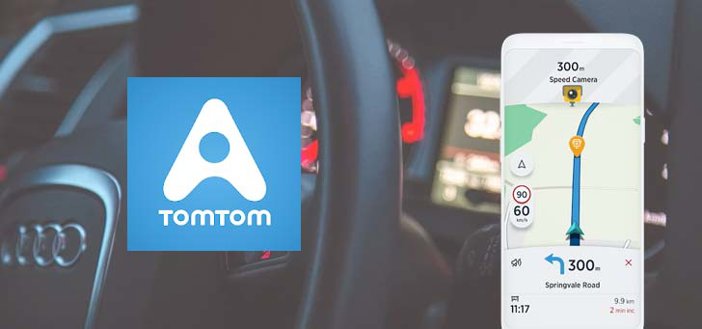
TomTom Rebrands AmiGO Into Unified Navigation App
TomTom is consolidating AmiGO into its core navigation app to streamline future updates and infrastructure.
TomTom is making a bold move in the mobile navigation space. The company has announced that its formerly independent navigation app, AmiGO, will be rebranded and integrated into a new TomTom app, leveraging TomTom’s latest infrastructure and features. While the transition is largely technical behind the scenes, the change signals the company’s renewed push to compete with Google Maps, Waze, and Apple Maps.
Below is a full analysis of what the rebrand means for users and how TomTom is positioning itself in the navigation app market.
Why the Shift from AmiGO to TomTom?
TomTom states that the transition from AmiGO to the TomTom app is intended to modernize its underlying architecture and allow faster development of features and updates. According to TomTom’s help center, the shift makes the app “fit for our latest technical infrastructure,” enabling improved performance, tighter feedback loops, and evolving user experience upgrades.
Many core features familiar to AmiGO users remain intact. TomTom says it will preserve route planning, real-time traffic data with alerts for roadworks and closures, speed limit indicators, and radar-camera warnings.
As of now, the focus is on migration, but TomTom hints at more enhancements in store, such as audible speed violation warnings, voice selection options, and offline navigation capability. iOS versions reportedly already include some of those upgrades, with Android versions catching up.
In sum, the rebrand is less about changing the navigation formula and more about evolving the platform’s foundation to better support future updates and features.
What Happens to AmiGO’s Features During the Transition?
TomTom promises that most of AmiGO’s functionality will carry over seamlessly into the new TomTom app. The essential navigation tools, such as turn-by-turn directions, real-time traffic, road condition alerts, and speed camera warnings, remain pillars of the offering.
On top of those, the new app introduces optimizations aimed at refining the overall user experience. TomTom cites “improvements to optimize the overall experience” in the rebrand announcement.
Among additional features:
- Navigation for electric vehicles (EVs): The app already shows nearby charging stations and supports EV-related routing.
- Audible warnings & voice customization: iOS already supports new voice settings and alerts for speeding; Android will follow.
- Offline navigation: This capability is slated for future release, giving drivers more flexibility in limited connectivity zones.
One feature that’s getting special attention is speed-related alerts. The new app will continue to show how fast you're going versus the official speed limit, alongside camera warnings and lane information.
Taken together, TomTom seems committed to evolving the navigation experience rather than starting from scratch.
How the Market Reacts: Competitor Pressure & Strategy
AmiGO has long been seen as TomTom’s free, community-driven alternative to premium navigation apps. But it never fully displaced dominant players. With its rebrand to the TomTom app, the company is signaling a more serious effort to compete with Google Maps, Apple Maps, and Waze. AutoEvolution notes the app is positioned as a “Google Maps rival,” featuring real-time traffic alerts, speed camera notices, and community-powered reporting.
It’s worth noting that TomTom has been shifting away from physical GPS device sales in some markets, focusing instead on software and mapping services.
With the rebrand, TomTom streamlines its offerings under a unified brand, hoping users recognize the continuity while benefiting from better technology and features.
What Users Want to Know
Will I lose any functions I now use in AmiGO?
According to TomTom, all core functions—navigation, traffic alerts, speed camera warnings—will carry over to the TomTom app. No features are being removed immediately.
Is the update available already?
The transition is underway. Some users have received invites via AmiGO’s beta program to try the new app.
Will offline navigation be supported right away?
Not yet. Offline capability is on the roadmap, but TomTom says it’s not yet live for all users.
How will the rebrand affect EV routing features?
The new app already includes EV support—showing nearby charging stations and route planning that considers charging needs.
Does this merge TomTom GO and AmiGO?
So far, TomTom has positioned this as a rebrand of AmiGO rather than a full consolidation with its premium GO app. Some users speculated about a merger, but no formal announcement has confirmed that.
Potential Challenges & Risks
While the rebrand offers promise, it also poses challenges:
- User adoption and trust: Some AmiGO users may be skeptical of change, especially if transitions introduce app instability or remove familiar features.
- Feature parity on Android: Some new functions (e.g. voice-enabled alerts) are already in iOS versions but not yet fully supported on Android—this discrepancy could frustrate users.
- Offline navigation delay: In an era where many navigation apps support offline maps, delaying this feature may dent competitiveness in low-connectivity environments.
- Brand confusion: Users might confuse the new TomTom app with TomTom GO (the premium product), leading to unclear expectations.
- Competition pressure: Giants like Google, Apple, and Waze continue to evolve rapidly. TomTom must differentiate itself meaningfully to remain relevant.
Looking Ahead: What TomTom Must Do to Stay Competitive
To make the rebrand a success, TomTom should prioritize:
- Consistent feature rollout across platforms: Ensuring Android and iOS users have parity will be crucial.
- Aggressive optimization of performance and reliability: With a new infrastructure, stability and speed are critical to win users’ trust.
- Community engagement: Given AmiGO’s user-driven roots, encouraging feedback and participation in improving maps and alerts remains essential.
- Offline & global reach: Faster deployment of offline navigation, support for varied geographies, and local maps will help attract users in regions with weak connectivity.
- Clear branding and messaging: Avoiding confusion with TomTom GO and clearly communicating what the new app offers is pivotal.
If TomTom can execute the transition smoothly while delivering meaningful improvements, the move might reposition it as a stronger contender in mobile navigation.
In summary, TomTom’s rebranding of AmiGO into the unified TomTom app represents a shift from maintenance to evolution. While core navigation features will remain, the company is seeking to modernize its infrastructure, accelerate feature development, and reinforce its competitiveness. The success of this transition will hinge on feature continuity, platform parity, and a clear and compelling value proposition for drivers worldwide.
Sources: TomTom Support TomTom autoevolution Reddit Wikipedia






